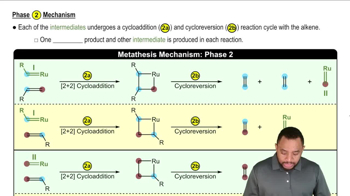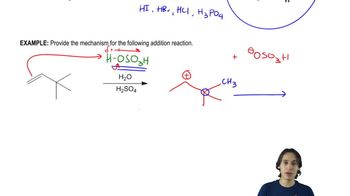Predict the major products of the following reactions, and give the structures of any intermediates. Include stereochemistry where appropriate. n
(n)

 Verified step by step guidance
Verified step by step guidance Verified video answer for a similar problem:
Verified video answer for a similar problem:



 6:32m
6:32mMaster General properties of acid-catalyzed hydration. with a bite sized video explanation from Johnny
Start learning